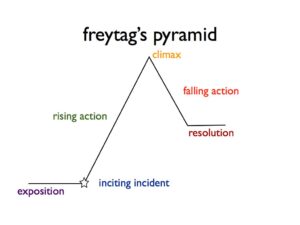
At its heart, PR is founded on good storytelling.
Think back to your favorite books over the years, what commonalities did they share? Chances are good that they all included a few key elements. Were you able to relate to the characters and put yourself in their shoes? Did their adventure excite you, inspire you, or pique your imagination in some way? Did the book so transport you that you cried or laughed out loud? Did it change the way you view the world?
Good storytelling has the ability to inspire, insight action, and create emotion. Good PR creates these same outcomes through storytelling.
Whatever your mission, whomever you serve, you certainly have a story to tell.
Whether you are providing youth mental health services, recycling mattresses, or conducting breast cancer research, your story is important and how you frame that story will determine your PR success. Even the most seemingly “dry” B2B company can create a good story. You just have to look at the basic psychology that drives human interest and engagement to determine how to capture your audience’s attention.
Which mediums can I use to tell my story?
PR storytelling for your organization can take many forms and should exist across multiple platforms. Whether you are using your owned channels(your newsletters, blog, and social media feeds) or want earned media coverage (through press pitches, press releases, byline articles, or ebooks), you need to tell your story in a compelling way. Each of these mediums provides an opportunity to touch people’s hearts, incite action, or create affinity for you and your cause. Never settle for boring content, think of every communication you produce as an opportunity to share your story.
When framing your story, think of your audience.
The first step for any writer or storyteller is defining the audience. You’ve likely identified your key marketing audiences already using some iteration of the following questions:
- What are the demographics of our target audience? Who has a need for the services we provide and who is most likely to heed our call to action?
- What are their interests, and activities? What are their attitudes and values?
- Why do they care about us, our service, or our organization’s mission?
Once you have identified your existing target audience, think about how and if you would like to reach new audiences.
For the organization that supports youth mental health services, you’ve probably identified parents, caregivers, teachers, and therapists as your targets. Who else could you tell your story to? Could you look at athletes or politicians? Find new donors or supporters in unexpected places? How can you frame your story based on existing audiences and re-frame it so that it resonates with new targets? As the old adage goes “there is more than one way to skin a cat” and there are certainly many ways to tell a story.
Make your heroes/heroines human
No one likes a perfect hero or heroine. That doesn’t make for a very good story. How can we root for someone who doesn’t have flaws or show their imperfections and their humanity?
As the leader of a purpose-driven organization, you don’t have to be flawless. In fact, for storytelling purposes, it’s better if you aren’t! It’s ok to show that your organization or industry has a big challenge ahead and you don’t know all the answers. It’s ok to share that you’ve made mistakes along the way. It’s ok to say that your organization has not yet solved the “big problem” that you are working to fix.
Your audience is human, and as humans we feel an affinity for others who are working hard, fighting the good fight, struggling to get it right, and achieving victories alongside losses. Like in your favorite novel, people love to root for the underdog. This strategy works in PR storytelling too, show them your humanity, and they’ll be rooting for you to succeed.
Make your stories relatable
When crafting content for PR purposes, you also want to make your story feel relatable. Consider the audiences that you’ve outlined. How can you make your story resonate with these groups? How can you help your audience feel an affinity towards you and your organization? This is the moment where you want your audience to feel like they are in your shoes or the shoes of the person you are trying to support.
If your organization is creating housing opportunities for individuals struggling with homelessness, then tell stories of how those individuals have struggled. Make your audience see and understand the issue, clear up any misconceptions, share your thought leadership, and show how your organization provides a solution.
When it’s time to start writing, use simple guidelines to create a big impact
Do you remember Freytag’s pyramid for storytelling from your high school English class? Freytag outlines the arc of a good story through a few key elements including:

Credit: Writer.com / “The 5 Stages of Freytag’s Pyramid / https://writers.com/freytags-pyramid
- Exposition: the background, setting, characters, setting the scene
- Inciting incident: something happens to begin the action
- Rising action: the story builds
- Climax: the point of greatest tension
- Falling action: events that happen as a result of the climax
- Resolution: the character solves the problem/conflict
- Denouement: French term meaning “the ending”
PR storytelling for mission-focused organizations should follow the same story arc. In order to reach your audience and create the emotive experience you are looking for, use the same tactics:
- Set the scene, tell people the big “why”, and outline who and what you are working with. What is the background story for your organization and your services?
- Describe the challenge the people you serve are facing. Describe the insurmountable obstacle your organization is trying to overcome. Describe the hurdles you’ve personally faced as it relates to your mission and cause.
- Create a climax by describing your organization’s solution to the problem. What are you doing to solve the homelessness crisis? What is your strategy for ending childhood hunger? How are you addressing the mental health crisis occurring amongst local youth? The climax is your pitch to the world. We are doing “X” to achieve “Y” goals or results.
- The events that follow are where you share your stories of success thus far. What changes have occurred as a result of your hard work?
- The resolution is your call to action. How can people join your cause to help you achieve your goals? What work still needs to be done in order to address the big issue or problem you are trying to solve?
- Finally, share your vision for a better future and a better world. This vision is the denouement, it is the end result of your hard work.
At its heart, PR is just good storytelling
Perhaps the most important part of your PR storytelling is pulling at heartstrings and inciting people to action. Without clearly articulating your “why,” you’ll never get people to act on behalf of your cause. If you don’t create an emotional or personalized connection, they’ll choose someone else’s cause.
People act when they can feel the pain of the person you are trying to help, when they can directly see the need in their community, and when they can understand who/why/what you are trying to do. Make it easy for them and utilize PR to tell your story. When you use the power of a good story, you can change the world.
Rhiannon Hendrickson is the founder and CEO of Orapin, which helps purpose-driven organizations transform their random acts of PR into a strategic, consistent approach that generates greater awareness and impact. She has worked with organizations of all sizes across myriad industries and causes to develop earned media and thought leadership programs that generate awareness, engagement, and, ultimately, support for those that are making a meaningful impact.
